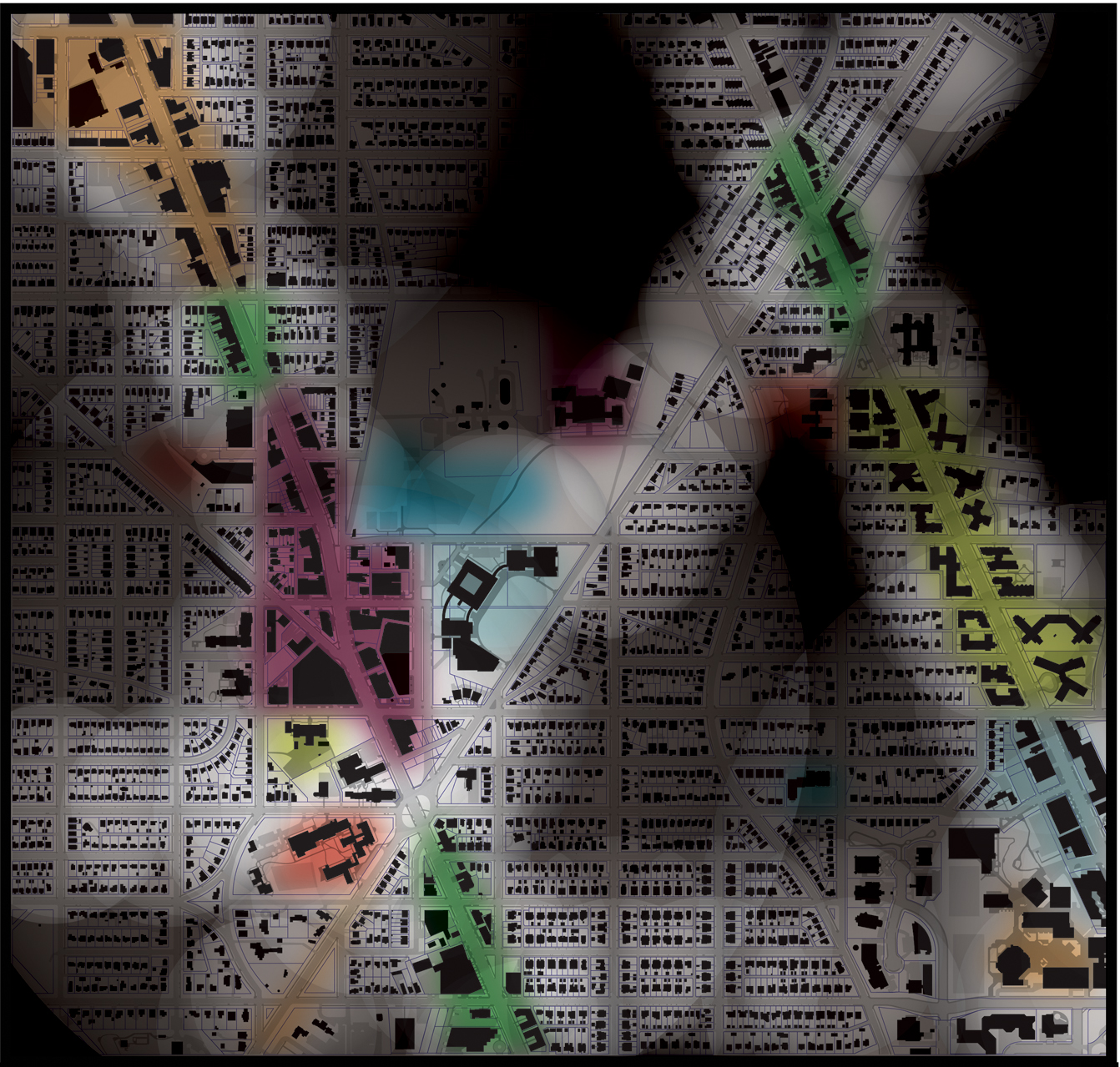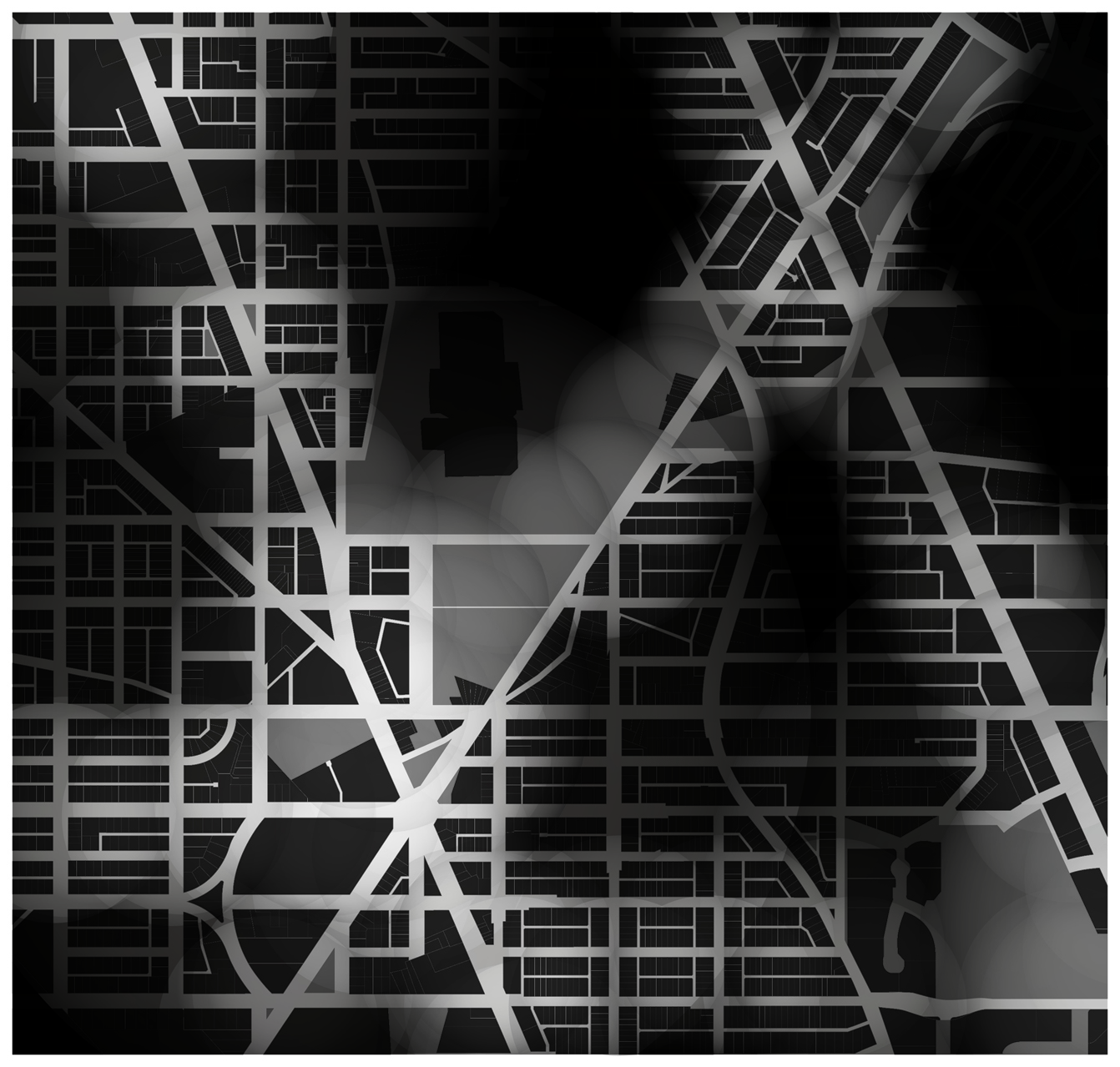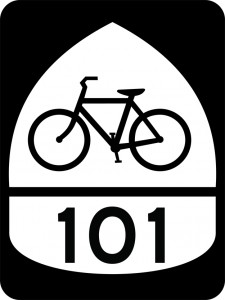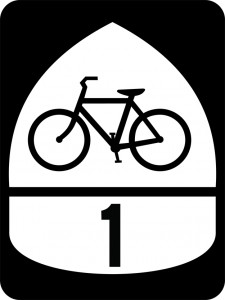So neighborhoods. The issue of neighborhoods is not a small issue here at цarьchitect, so I want to explore how the nominal neighborhoods in DC, are relatively arbitrary. Whereas Cleveland Park is a coherent collection of period houses clustered around the summer home of our favorite philandering and mustachioed head of state. The same is relatively true of Chevy Chase. But other areas, such as AU Park or Tobago lack legible borders, character, nodes, or strong community sentiment. With these flaws in mind, I asked the internet where neighborhoods began and ended. For example, Wikipedia:
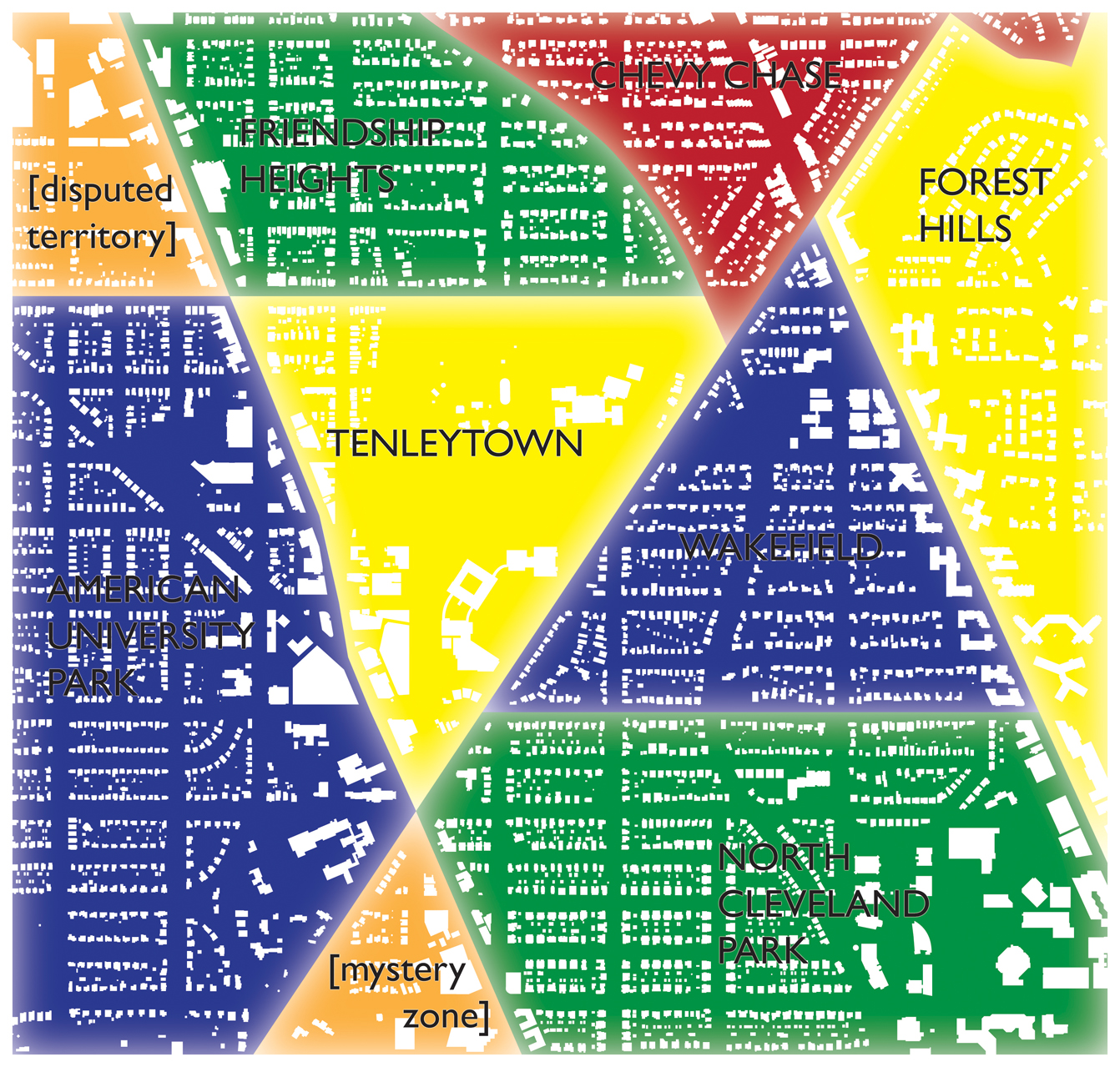
As you can see, there are some flaws to this map – some areas aren’t exactly stuck into boxes and others are claimed by two neighborhoods. Moreover, Tenleytown has, maybe, 100 residents and its borders rest, like the ANCs, along corridors where there is precisely the most activity, along Wisconsin. It also perpetuates the myth that there is a neighborhood called “Wakefield.” The name is a myth created by realtors, and you will not find anyone who actually calls it that, except perhaps some serpent or monster who wishes only to deceive you. . Clearly, it’s totally unsatisfactory. So, based on an informal poll and my own views, I’ve revised it:
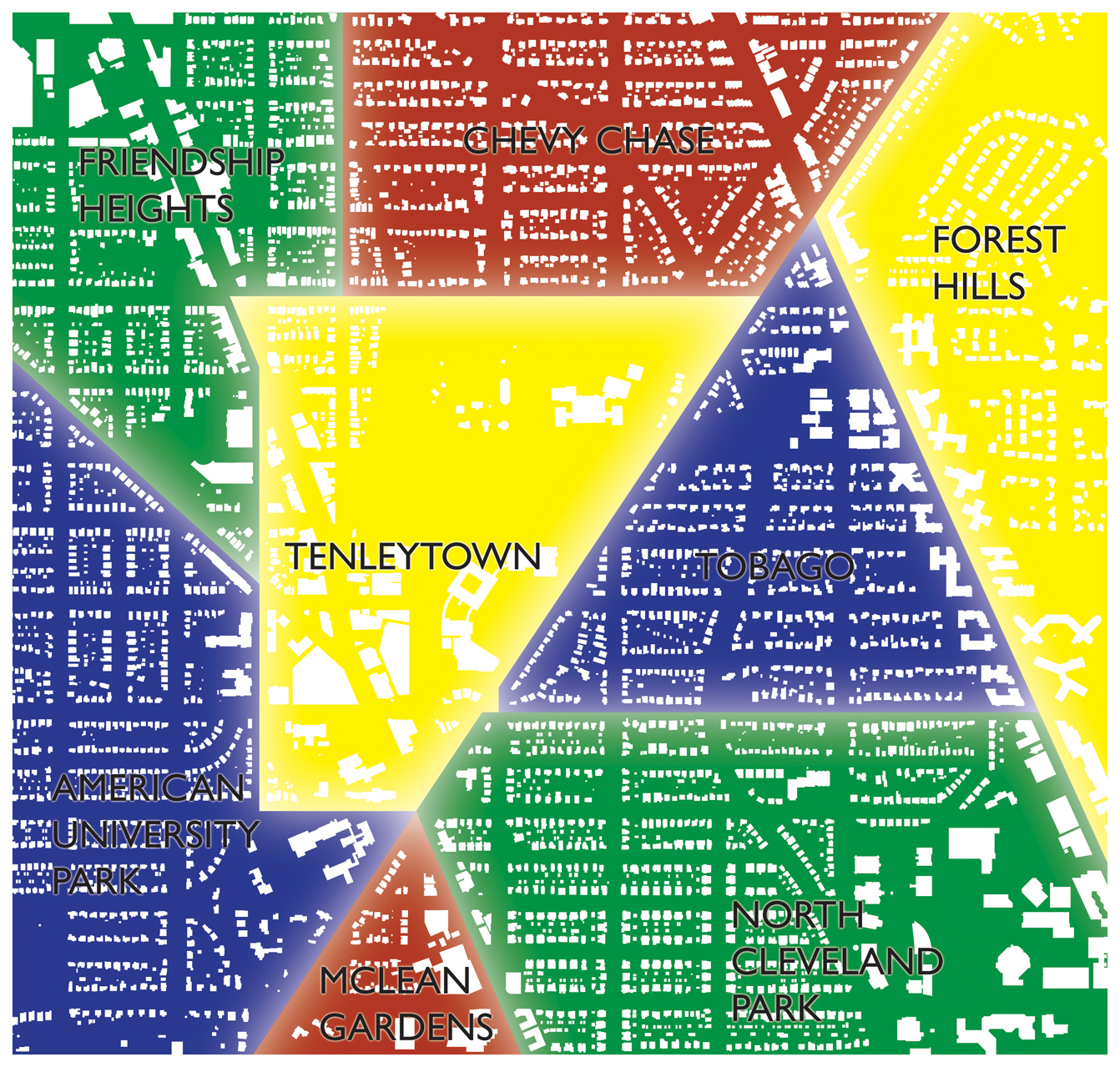
Continue reading ➞ Reno Park Update 091206: Bad Names
